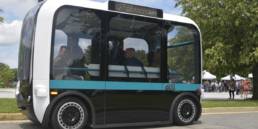12 Reasons to Vote NO on Austin’s Proposition to start a massive Transit Overhaul with Light Rail
Our position: The Austin/Cap Metro proposed massive (Go Big- Bold) transit system, called Project Connect (PC), is more of a marketing plan than transit plan. It’s supported by an array of dishonest and distorted justifications with little integrity and transparency. It crosses the line of advocacy and electioneering by using public funds to convince the public to vote for it. The advertising campaign makes many claims that are not factual information and based on opinion or speculation. Never in the history of our city has a taxing entity crossed this line with such impunity. This transit scheme would take decades to fulfil, degrade affordability and create more community disruption than any major decision in Austin’s history.
The public debate has taken place in a stunning vacuum of critical questioning by local leaders and the majority of local media outlets. More time has been spent questioning and criticizing the opposition, who asks nothing from the public and works to provide the complete picture. Hundreds of thousands of tax dollars have been given to local media and press over the past year. They have dutifully parroted proponents talking points with little criticism or hard questions, expressing little interest in opposition issues. It is expected the plan will be endorsed by the Statesman, Chronicle and many political organizations which have fallen for Project Connect’s deception and distortion.. Mobility affects all citizens regardless of political affiliation, injecting partisan politics into the mobility debate is a disservice to the community and seeks to divide voters in a contentious election cycle.
CONSIDER THESE ITEMS:
- This “regional” plan places the entire cost exclusively on people within the Austin city limits. The tax impact could be much less if everyone was paying their fair share, but proponents want to suppress the more conservative outlying voters that may be against it.
- PC’s proposed redevelopment will displace countless low-income working families, regardless of “displacement mitigation” band aids.
- PC is a marketing plan not a transportation plan, little actual engineering has been done; it is based on guesses and estimates with little investigation. The emphasis is selling the public with false promises of fixing traffic congestion, climate change and making Austin a “real city”, using slick advertising.
- Creative accounting is employed to conceal the plans true cost to renters and homeowners, primarily because if the cost is fully known, it will be rejected. This has new significance with the economic downturn, proponents persistence illustrates tone deafness to the plight of renters and homeowners.
- The plan is predicated on federal funding that has no commitment or guarantee. We would be fools to approve a plan that isn’t contingent on a full commitment for these funds.
- They avoid the fact there is no revenue stream to pay the huge operating cost. No clear answer to that problem has been offered and none of the media has asked for specifics.
- Homeowners and renters would begin paying the tax increase next year, for a light rail that wouldn’t be operational for nearly a decade – IF it comes in on time, unlike MetroRail.
- Proponents tout a tax rate woefully inadequate to fund the capital costs – disregarding coming inflation or the typical cost overruns. Again, our news media and newsletter operators have little curiosity on the shortage or demand a full accounting that adds up.
Bottom Line: Project Connect will result in a major cost-of-living increase for all Austin citizens, for generations.
Background: Public Transit is an important community service but is changing rapidly due to improving technologies and citizens’ decision as to how mobility best meets their variety of needs resulting in the desired quality-of-life. These decisions and changing considerations have resulted in a long decline in transit ridership in the U.S. and in Texas.
- Spends too Much on Rail: Most of PC’s cost is dedicated to a central Austin light rail system that would serve less than 1%, of our regional mobility. This will significantly increase congestion and degrade the mobility of those traveling 99% of the non-rail, transit passenger miles.
- Congestion Will Increase: Perhaps the extreme, dishonest reason for this proposed transit system is to “Reduce Congestion.” This plan will reduce road lanes which serve private, shared (taxi, Uber, etc.) commercial, public transit, emergency, school, and government vehicles causing major increases in congestion. There are no U.S. cities where more transit has measurably reduced overall congestion and many where it significantly increases congestion. Has anyone considered the impact of disrupting major corridors in our city and the downtown with years of construction? The loss of vehicle lanes on those same streets?
- Austin’s Major Goals Not Achievable: The city has established a set of “fantasy” goals for this transit plan’s performance, and mobility in general in the “Austin Strategic Mobility Plan”, which have never been achieved in another city and will not be achieved in Austin. There are no cities, similar to Austin today, or Austin 75+ years from today, where this proposed transit strategy has effectively served its citizens’ mobility needs. They are experimenting with our future, diverting funds that are vital for other needs in our community.
- This Is Only the First Phase of PC’s Plan: Austin is proposing the first phase of a PC massive transit overhaul which they have not shared total cost estimates, citizens’ tax implications or schedules. Comparisons would estimate the cost it to be over $20 billion and take generations to complete a totally obsolete system. They want to bait you into a “let’s get it done, then it will work” nightmare where the price keeps rising and renters and homeowners are trapped funding a transit nightmare, the vast majority will never use.
- Huge Increase in Home Ownership Cost and Rents: This multi-billion dollar train transit system must be funded by increasing property/ citizen’s taxes, resulting in major tax and rent increases for generations and continuing to make Austin less affordable. The total proposed transit system would increase taxes by thousands of dollars per year for the average home. There is no guarantee or commitment for the federal funds they promise – without those we have a big problem. The U.S. government has delayed major transit commitments to almost 20 cities for several years and the current economic condition is not conducive to supporting Austin’s weak plan. The government would not pay for overruns, which will occur, or for the additional $100+ million per year for increased transit operating costs. This will further escalate property taxes, fees and rent.
- Transit Ridership is in Decline: Transit ridership is on a declining trend in the total U.S. All four major Texas cities have spent a total of several tens of billions of dollars to increase transit ridership through 2019, and, transit ridership has reduced in Texas over 20 years (1999 through 2019). Austin had the largest population growth of 85% and the greatest decline of transit ridership at 16%. People have made these choices for their best quality-of-life and trying to force them to change due to city leaders who think they know better will fail, resulting in a highly degraded Austin community.
- Based on False Promises: Project Connect would have no measurable positive impact on congestion or the environment as proven in many other cities. It is more likely to exacerbate congestion and environment issues. The city’s promotion of companion “Code Next” to increase density, creates its own set of problems. They dishonestly portray benefits that upon close examination have no proof. The massive construction and trucking involved will consume tens of thousands of gallons of diesel, burned in heavy equipment that lack pollution controls. Opposite results to what is promised is just as likely, those include: higher costs, greater congestion, and greater air pollution.
- Obsolete Before Complete: This transit system and, its light rail train elements in particular, are outdated and quickly becoming obsolete. Current and future technologies, are already replacing these dated concepts, even more so before they would be implemented. Is Austin the progressive, advanced thinking city it represents itself as? Let us go forward, not backwards. Misguided local leadership is trying to lead us into “investing” in what will likely be a “museum grade mobility antique” before it is completed.
- Devastates Small Businesses: This plan will devastate Austin businesses on rail routes throughout construction years. Already beleaguered by the current pandemic, this will be the death knell for these small businesses – is this part of the big developers plan?
- Burdens future generations: This wasteful, ineffective transit approach will mortgage and degrade the future of many generations with its growing tax burden, higher home/rent costs, and congestion. The siphoning off of so many public dollars into such little return, will limit citizens access to resources to address future needs. “TRANSFORMATIONAL” really means: It will ‘transform’ many working families into poverty, ‘transform’ low income residents domiciles beyond the reach of PC, ‘transform’ existing affordable housing stock into stainless/granite re-developments unaffordable for the current residents along the intended line and ‘transform’ the laid back city we all know and love, into a high-density, public transit dependent, nightmare. When they call it “generational” it really means, your children and grandchildren will be paying for it decades into the future AND will be the ones to eventually remove it to make way for the more efficient and convenient New Mobility.
- Motivated by Self-Serving Greed: Project Connect is primarily a very self-serving transit plan for politicians, transit organizations, real estate community/investors and supporting/benefiting contractors with little relevance to the greater-good of the citizens of Austin’s vast community. Almost none of the folks in these supporting factions will ride transit, but they will receive abundant tax dollar benefits.
- COVID-19 Impact: The recent COVID-19 impact has accelerated the growth of the Work-At-Home population which has already increased almost 5 times in 20 years. Each work-at-home employee is a car off the road. This work segment was almost 9% of the total Austin workforce, exceeding the number of public transit commuters, prior to COVID-19. It is expected to double as a result of the COVID-19 impact and estimates predict it could at some point comprise the majority of our workforce. Consolidated downtown offices could become ghost towns as companies see the increased productivity of home based employees, lower overhead from lease space reduction and home workers finding the extra time to spend with their kids and interests. These increases will dramatically decrease roadway congestion; a condition that has already appeared. This transition and modern roadway technology will reduce the need for major roadway improvement, costing property owners and renters very little. High cost light rail functionality falls dramatically with social distancing and would be obsolete before complete in 10-20 years. Rail ridership in the U.S. is highest for those earning $125,000 to $200,000 and lowest for riders below $50,000; this segment of commuters is most conducive to work-from-home. There is now a heightened fear factor for public transit from homeless, crime and contagion that will have a chilling effect on public transit in the future.
What is a responsible vision for our transportation future? Current and rapidly advancing technologies are revolutionizing transit and transportation. New technologies are being rapidly developed, that focus on systems meeting the choices and needs of citizens. A smart transit plan adapts to the needs of the traveler; Project Connect does the opposite. The foundation will be “On-Demand, Doorstep-to-Destination,”; travel when you want, specifically to where want, in a reasonable time. This can only be achieved on a comprehensive, efficient roadway system serving private, shared, commercial, public transit, emergency, school, government, and other vehicles. Our priority transportation goal must be a complete a comprehensive, modern, connected backbone roadway system enhanced by many elements of technology that makes it safe and efficient. Billion dollar transit systems that burden the taxpayer are the past. They serve a shrinking portion of citizens’ needs, consume a huge portion of transportation funds and rob future generations enjoyment of efficient, convenient mobility.
It is essential and prudent that these major technology and operational impacts be fully evaluated to define their role, prior to committing many billions of dollars into an obsolete light rail system like Project Connect. There has been no critical questioning of this plan by our city leadership and the majority of local media outlets. The conversation must also consider what these billions could do for our community, and what they won’t do if tied up in the Project Connect trainwreck.




